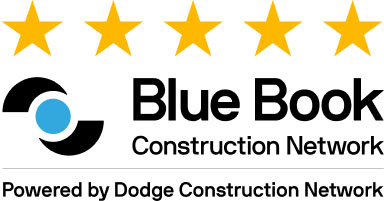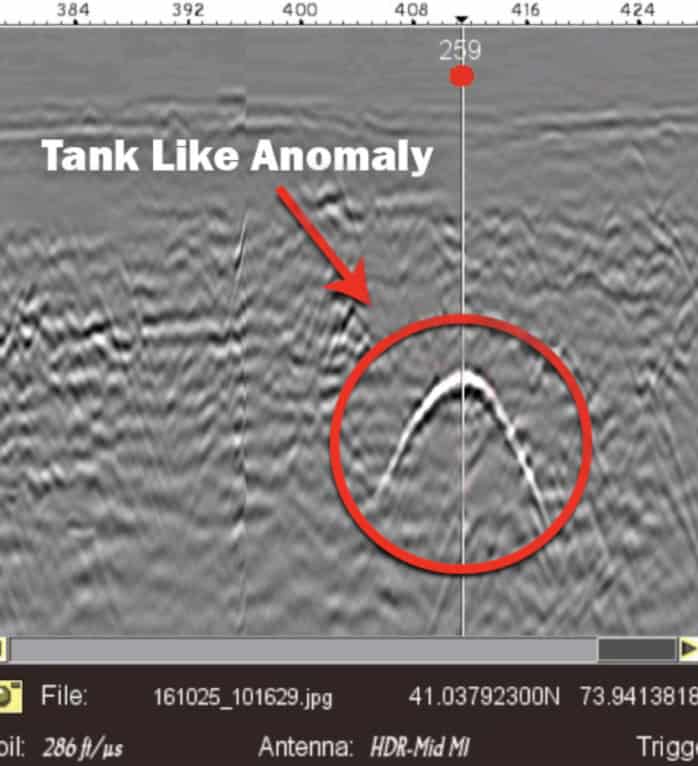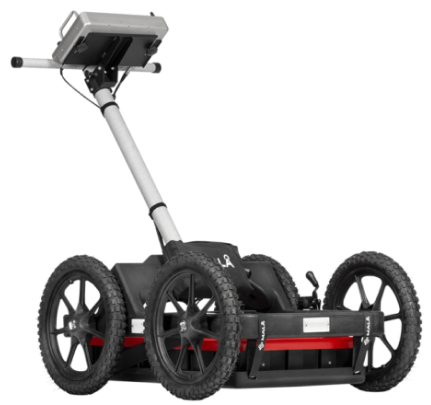Oil Tank Sweep


A leaking underground oil tank can be the nightmare below the surface of your dream home.
GPR Tank Sweep
Underground Oil Tank Location Experts

We’re Insured.
Each GPR Tank Sweep report carries a 2 Million dollar insurance policy. Our customers are covered, and have peace of mind, should we err in our investigation.
No Need for a Second Opinion.
We have the only transferable report in the business. Buyer's don't need to have another sweep done, we can make a new report in their name!
Line Tracing is ALWAYS Included.
Specialized Line Tracing Equipment is used (as necessary) on every job! Line Tracing can lead us to an endpoint where a tank is, or once was. This is valuable information (where to test soil for contaminants) if the tank is gone but there is not a properly documented removal.
Easy Scheduling & Great Service!
Book appointments through our website or call and speak directly to our friendly and knowledgeable office staff. They are happy to answer any questions you may have, but don’t take our word for it! We’re proud to stand behind hundreds of 5 star reviews.
GPR is ALWAYS Included if Necessary.
Ground Penetrating Radar is included (if necessary) in every job! This saves the extra time and expense associated with an exploratory dig. We also check the areas under the steel reinforced concrete driveways, walkways, and patios. There is NO additional charge for performing GPR scanning as an add-on service, like some competitors do.



The 5 Steps of a GPR Investigation
Visual Inspection
We perform a meticulous visual inspection, both interior and exterior, looking for any signs of Underground Storage Tanks (USTs). Underground heating oil tanks can contaminate surrounding soil, so a visual inspection of soil contamination and potential health risks are crucial prior to a subsurface detection scan to find an old oil tank.Ferromagnetic Detection
USTs are made of steel, so we standardly perform a 30' perimeter oil tank sweep to search for any tank-like anomalies. Whole property oil tank sweeps are available also for residents of New Jersey, New York, and Pennsylvania!Electromagnetic Tracing
When we find abandoned oil supply lines, remote fill pipes, or vent pipes during our visual inspection, we attempt to perform line tracing which leads us to where an underground tank is, or once was. This is an important part of an oil tank sweep and can help narrow down the search on your particular property.Ground Penetrating Radar
Areas where we detect tank-like anomalies are scanned with Ground Penetrating Radar GPR, as well as surfaces such as steel reinforced concrete patios, walkways, and driveways.Rod Probing
We use rod probing in our oil tank sweep to make contact with the discovered anomaly, to confirm the anomalies depth and that it is steel, not made of concrete with steel components inside of it. Oil Tanks tend to rest 1-3 feet below ground surface and are typically 6 feet in length.
Get Covered with a FULL UST investigation!
What Our Partners are Saying

Precise Results: Ultimate Coverage
Our Full UST Investigation
Other’s Typical “Tank Sweep”
- Visual Inspection
GPR Tank Sweep
The Other Guys:
- Line Tracing
GPR Tank Sweep
The Other Guys:
- Metal Detection
GPR Tank Sweep
The Other Guys:
- Ground Penetrating Radar
GPR Tank Sweep
The Other Guys:
- Rod Probing for Confirmation
GPR Tank Sweep
The Other Guys:
- Insured Report is Transferable to future property owners
GPR Tank Sweep
The Other Guys:
- Insurance Coverage
GPR Tank Sweep:
*Up to $2 Million
The Other Guys:
$0
*Up to 2 Million Worth of insurance that covers if we were to err in our investigation
GPR Tank Sweep
$395
The Other Guys:
$400+
A single family home, residential, under 4500 sq. ft, in NJ.
..or Call Now for Assistance! We respond within 24 Hours!

Frequently Asked Questions
Ground penetrating radar is highly subject to the materials being scanned. That’s why GPR one call uses an extensive arsenal of additional equipment both to scan for objects and utilities both with and without electromagnetic properties. This allows us to gain a holistic picture of your subsurface structures even if radar imaging is not possible. From concrete to wet sand and everything in between, you get a complete picture of what is below the surface even when a GPR system is not optimal.
Rocks and cement are considered high conductivity materials. Ground Penetrating radar can scan them, but depending on the depth, GPR Tank Sweep will advise using additional, concrete and rock scanning specific technology, to look for any potential hazards ground penetrating radar might not be able to find.
Ground penetrating radar GPR is excellent at detecting anomalies underground, including potential tanks, underground utilities, and potential ground disturbances. However, in order to get the full picture, once GPR measurements are taken using our higher frequency antenna, we strongly recommend pairing the GPR technique with GPR technicians who can examine the subsurface mechanical properties of a GPR scans findings and use supportive technology to affirm the precise utility the radar signals are indicating.


